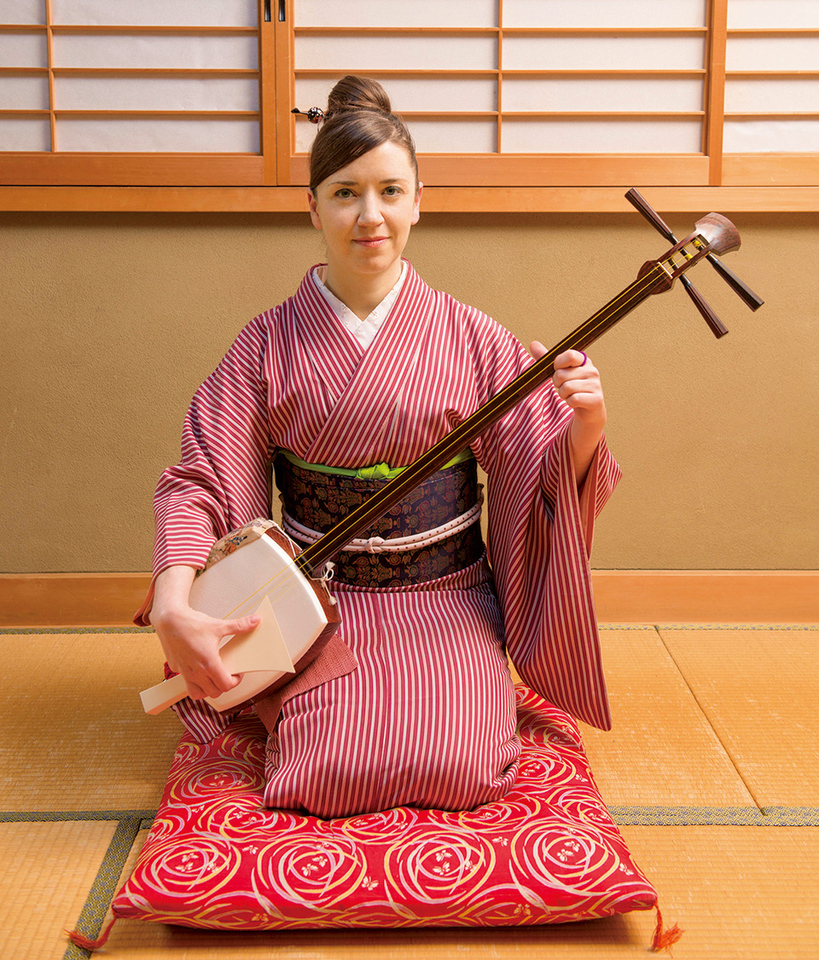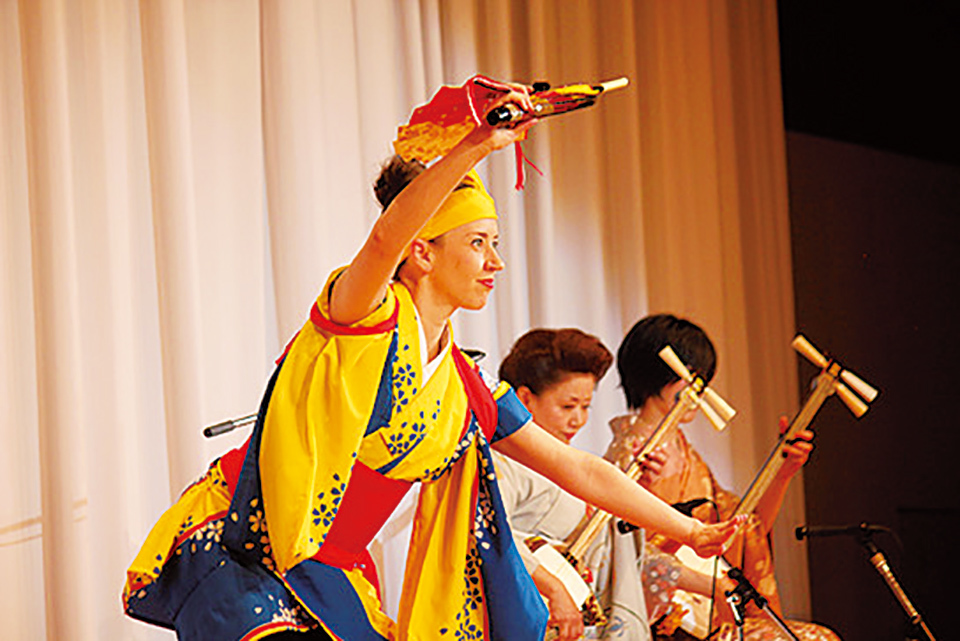Maud Archambault
Raised in Quebec, Canada. She first became interested in Japanese culture as a student at the University of Montreal. After arriving in Japan in 2001, she studied min’yo while working as an English teacher and translator. In 2014 she became the first non-Japanese professional min’yo performer. She is an aficionado of Japan’s kimono culture and has learned to put on the complex garments by herself. In the above photo, she poses while holding a shamisen.
Archambault holds a kasa and sensu while performing the “Tsugaru Oharabushi.”
When Canadian Maud Archambault took up the shamisen in 2001, a year after landing in Japan, out of a desire to learn something culturally distinct, little did she imagine it would lead her to center stage of Japan’s highly traditional folk music world. Over the last 13 years the Quebec native has won numerous min’yo (folk music) competitions, becoming the focus of media attention in Japan and abroad. She even cohosted a nationally broadcast folk music program. In 2014 she became the first non-Japanese member of Japan’s professional folk singers and dancers association.
Japan abounds in min’yo , with each region boasting its own rich heritage of songs and dances. “Min’yo and I found each other,” Archambault explains, noting that her introduction to the multifarious musical genre came in steps. The instructors at the school in Saitama Prefecture where Archambault studies recognized her talents early on and gradually introduced her to different aspects of folk music. These included instruments like the taiko drum, along with min’yo ’s distinct styles of singing and dancing.
Folk music has come down over the generations as melodic incarnations of regional culture and history. “The music tells about different places and events around Japan,” says Archambault, observing that many songs emerged to mark significant seasonal events in community life. “There are songs about picking tea leaves or planting rice fields,” she explains, adding, “Many are celebratory songs that were performed at festivals and other important occasions.”
Archambault is a proficient min’yo musician and singer, with her talents extending to multiple instruments as well as folk music’s demanding vocal techniques. She must also meet the challenge of singing in various local dialects. But her greatest talent—the one for which she holds a professional license—is minbu , or folk dancing. She began studying the art in 2008 and has since rapidly built her repertoire of regional dances.
Minbu includes a wide range of graceful, flowing moves as well as distinct costumes. Archambault fell in love with these aspects, but what she says she relishes most is the opportunity for personal expression. “Each song has set poses, but how you transition as you express them is up to your own interpretation.”
One of her favorite dances is “Tsugaru Oharabushi,” a flamboyant piece from northern Honshu performed with a traditional umbrella (kasa) and folding fan (sensu). Props are common features in minbu , serving to enhance performers’ storytelling.
More than just a visual spectacle, folk dancing is also a traditional way to connect with others, such as at the local bon odori festivals held in communities around Japan every summer. “When everyone dances together, each person’s energy flows and is shared,” she says.
Archambault looks to use this communal aspect to spread understanding of min’yo , which she laments has waned over the years. Along with performances, which serve to introduce newcomers to the art, she hosts small gatherings to teach foreigners and Japanese about
min’yo and runs workshops prior to festivals.
Archambault is indefatigable in her ambition to hold more performances in Japan. She hopes to eventually take Japanese folk music abroad, but says, “I would like to start by showing min’yo to foreigners living here.”
































































































































